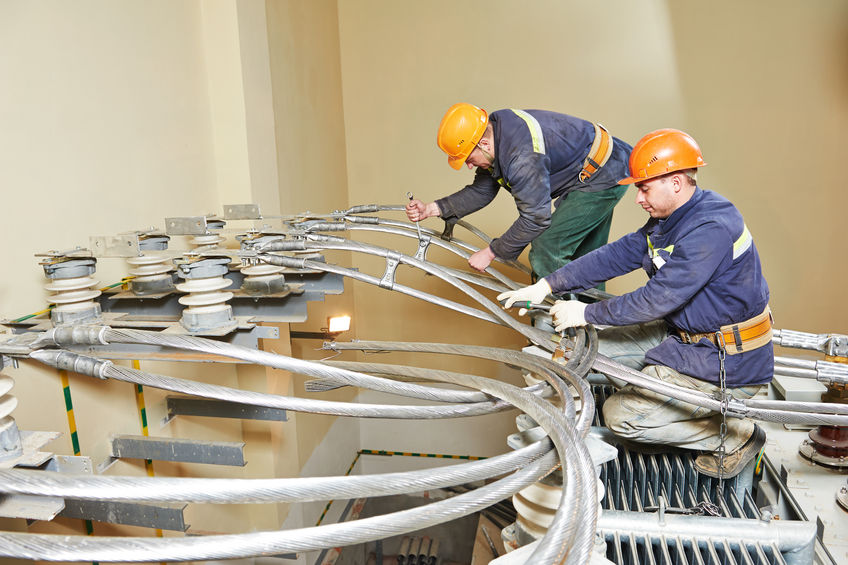Of all metals, only two of them are widely used for electrical conductivity in both home and industrial uses. Copper and aluminum are most often utilized as electrical conveyors in electrical links because of their low opposition and superb conductivity. This is because they do not corrode easily and are very ductile. They are also easily available and are thus less expensive.
Learn More About Our Company:
ABOUT US | OUR PRODUCTS | CONTACT US
You will find copper being used for most electrical transmission in homes but when it comes to high-voltage lines, aluminum is preferred. This article gives information why copper is not a very good choice of electrical conductivity in high voltage lines.

It is Expensive
Copper is available in natural forms as a mineral that takes time and resources to be mined. For it to be used in high voltage lines, it would take miners years of work to produce enough copper. It would also take many resources to mine the required amount. For this reason, it would require heavy security to guard the pylons since it is prone to theft and vandalism. Taken into consideration, copper would involve lots of money if it were to be used in high voltage lines. This would call for extremely high costs of operation to acquire enough copper and guard it against theft.
Tensile Strength
The tensile strength of an electrical conductor is important because you do not want a brittle cable that easily breaks upon being bent. Tensile strength of copper is twice that of aluminum, which makes it ideal for electrical conductivity at home. On the other side, it is not a good choice for high voltage lines. This is because high voltage line transmissions involve lots of bending of the cable when doing installation. Since the cables are always swung by strong winds, they would end up breaking now and then, hence high maintenance and repair costs.
It is Heavy
Naturally, copper is heavy, and this can be attributed to its density. For this reason, copper is not a very good choice for electrical transmission in high voltage lines. It would take so many men to hold and erect the cables over a long distance. Alternatively, it would take heavy equipment to erect and stretch the heavy copper cables. All these would increase the operational costs, which is not viable. Once erected, the cables would sag over our heads, and this would call for frequent repairs and maintenance, thus skyrocketing operational costs for power companies.
It is More Thermally Conductive
While an aluminum conduit is just about 61% as conductive as the equivalent measured copper channel, it is additionally multiple times lighter in weight, which makes it a lot simpler to deal with. Therefore, the aluminum discovers favor in huge size links and links for overhead force appropriation. The distinction in the conductivity implies that a bigger aluminum conveyor should be utilized to coordinate the conductivity of the comparable copper transmitter. Utilizing a bigger conductor has the extra impact of requiring a more noteworthy measure of protection material to sufficiently cover the conductor and the additional cross-sectional size of the link might be prohibitive in specific applications. Copper is more thermally conductive than aluminum yet once more when the bigger conveyor sizes are considered in the distinctions are diminished.
More Losses of the Current
High voltage electric power transmits from the power station to our homes in two form of currents – direct and alternating currents. The more cross-sectional area an electric cable has, the more the conductivity and consequently loss of energy. Since the electric energy on power cables has not reached its destination yet, most of it would end up being lost if copper was used in high voltage lines. Instead of copper, aluminum, a less dense metal is used in high voltage lines. This is due to its smaller cross-sectional area, which reduces conductivity and in turn minimizes energy losses. Aluminum too is not enough to reduce energy losses, several smaller aluminum cables are woven to bring more current to the surface and reduce electrical energy losses during the transmission.
To prevent electrical energy losses and save on operational costs, aluminum is used in place of copper when doing large scale electrical transmissions. This is because unlike copper, aluminum is readily available, which makes it less expensive, and this translates to less operational costs. At the same time, aluminum is three times lighter than copper. This makes it easier to erect and maintain using just a little amount of maintenance costs.
Additional Resources
- How Much Voltage Drop Can a Busbar Withstand?
- We go into detail about What is Relay and Busbar in this article.




